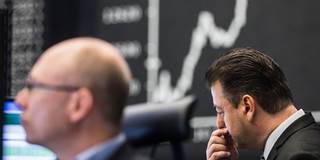Today's economy is in a “risk-on” period, when investors exchange safe-haven assets like US Treasury Bills for riskier ones, from real estate to carry-trade currencies. But when such behavior assumes that economic conditions are more stable than they are, as seems to be the case today, trouble inevitably follows.
CAMBRIDGE – During most of 2017, the Chicago Board Options Exchange Volatility Index (VIX) has been at the lowest levels of the last decade. Recently, the VIX dipped below nine, even lower than in March 2007, just before the subprime mortgage crisis nearly blew up the global financial system. Investors, it seems, are once again failing to appreciate just how risky the world is.
Known colloquially as the “fear index,” the VIX measures financial markets’ sensitivity to uncertainty – that is, the perceived probability of large fluctuations in the stock market’s value – as conveyed by stock index option prices. A low VIX signals a “risk-on” period, when investors “reach for yield,” exchanging US Treasury bills and other safe-haven securities for riskier assets like stocks, corporate bonds, real estate, and carry-trade currencies.
This is where we are today, despite the variety of actual risks facing the economy. While each of those risks will probably remain low in a given month, the unusually large number of them implies a reasonably strong chance that at least one will materialize over the next few years.

CAMBRIDGE – During most of 2017, the Chicago Board Options Exchange Volatility Index (VIX) has been at the lowest levels of the last decade. Recently, the VIX dipped below nine, even lower than in March 2007, just before the subprime mortgage crisis nearly blew up the global financial system. Investors, it seems, are once again failing to appreciate just how risky the world is.
Known colloquially as the “fear index,” the VIX measures financial markets’ sensitivity to uncertainty – that is, the perceived probability of large fluctuations in the stock market’s value – as conveyed by stock index option prices. A low VIX signals a “risk-on” period, when investors “reach for yield,” exchanging US Treasury bills and other safe-haven securities for riskier assets like stocks, corporate bonds, real estate, and carry-trade currencies.
This is where we are today, despite the variety of actual risks facing the economy. While each of those risks will probably remain low in a given month, the unusually large number of them implies a reasonably strong chance that at least one will materialize over the next few years.